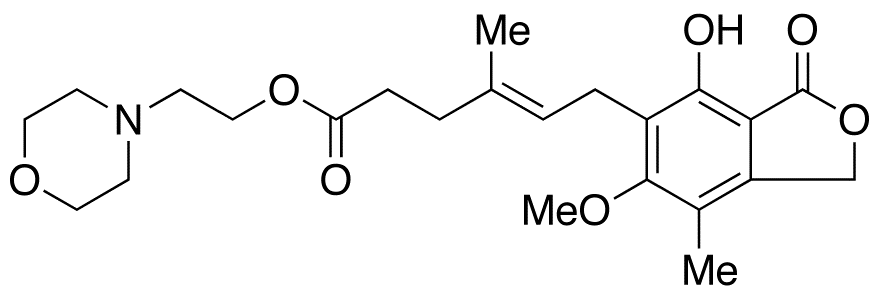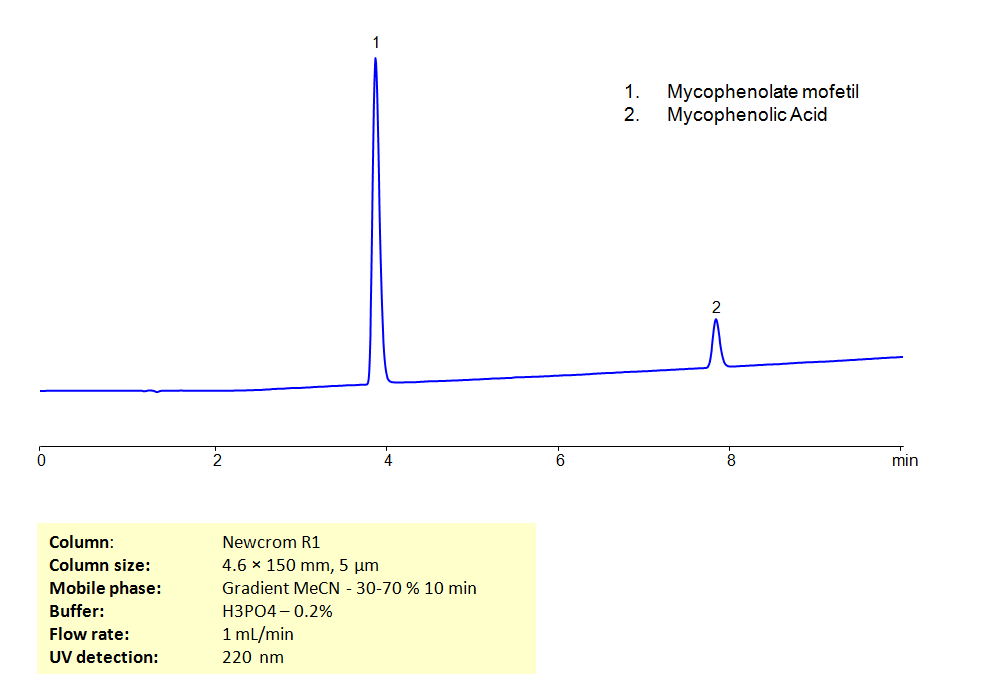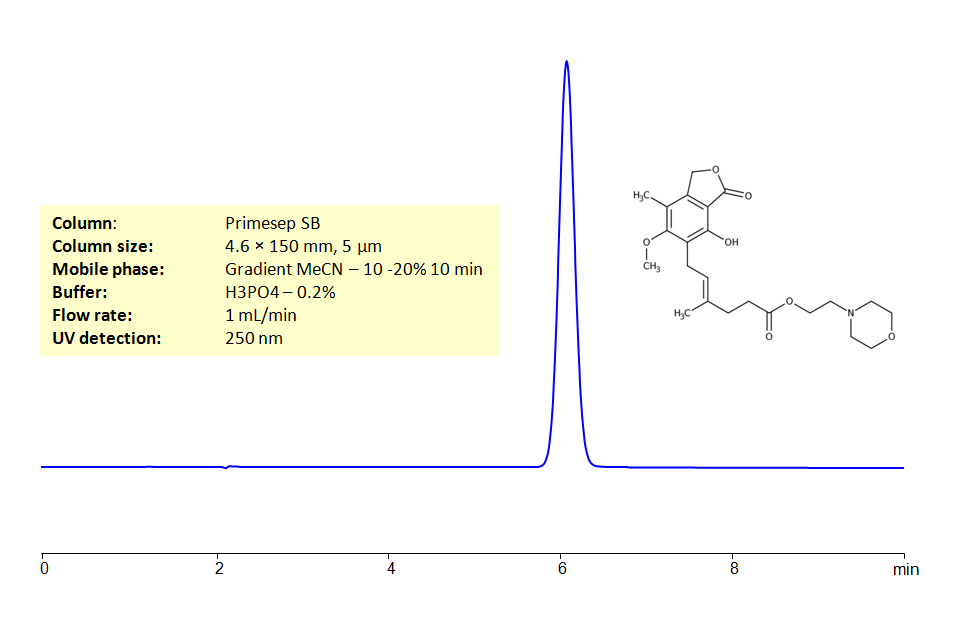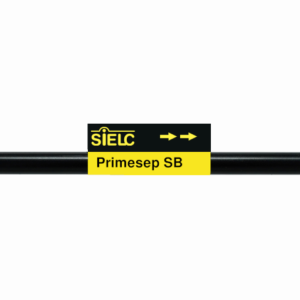| CAS Number | 128794-94-5 |
|---|---|
| Molecular Formula | C23H31NO7 |
| Molecular Weight | 433.501 |
| InChI Key | RTGDFNSFWBGLEC-SYZQJQIISA-N |
| LogP | 3.2 |
| Synonyms |
|
Applications:
HPLC Separation of Mixture of Mycophenolate mofetil and Mycophenolic Acid on Newcrom R1 Column
May 2, 2019
HPLC Method for Mycophenolic acid, Mycophenolate mofetil on Newcrom R1 by SIELC Technologies
High Performance Liquid Chromatography (HPLC) Method for Analysis of Mycophenolic acid, Mycophenolate mofetil.
Mycophenolate mofetil and mycophenolic acid alongside other medicines are used as immunosuppressants to prevent organ rejection after a transplant. Both compounds can be retained and separated in HPLC using Newcrom R1 reverse-phase column. The analytical method’s mobile phase consists of a gradient of acetonitrile (ACN) in water with phosphoric acid (H3PO4) buffer and using UV detection at 220nm.
| Column | Newcrom R1, 4.6 x 150 mm, 5 µm, 100 A, dual ended |
| Mobile Phase | MeCN/H2O – 30/70% |
| Buffer | H3PO4- 0.2% |
| Flow Rate | 1.0 ml/min |
| Detection | UV, 220 nm |
| Class of Compounds |
Drug, Acid, Hydrophobic, Ionizable, Immunosuppressant |
| Analyzing Compounds | Mycophenolic acid, Mycophenolate mofetil |
Application Column
Newcrom R1
Column Diameter: 4.6 mm
Column Length: 150 mm
Particle Size: 5 µm
Pore Size: 100 A
Column options: dual ended
Mycophenolic acid

HPLC Determination of Mycophenolate Mofetil on Primesep SB Column
May 1, 2019
HPLC Method for Mycophenolate mofetil on Primesep SB by SIELC Technologies
High Performance Liquid Chromatography (HPLC) Method for Analysis of Mycophenolate mofetil.
Mycophenolate mofetil alongside other medicines is used as an immunosuppressant to prevent organ rejection after a transplant. THe compound can be retained in HPLC using Primesep SB mixed-mode column that has both hydrophobic and anion-exchange properties. The analytical method’s mobile phase consists of a gradient of acetonitrile (ACN) in water with phosphoric acid (H3PO4) buffer and using UV detection at 250nm.
| Column | Primesep SB, 4.6 x 150 mm, 5 µm, 100 A, dual ended |
| Mobile Phase | Gradient MeCN – 10-20%, 10 min |
| Buffer | H3PO4 – 0.2 % |
| Flow Rate | 1.0 ml/min |
| Detection | UV, 250 nm |
| Class of Compounds |
Drug, Hydrophobic, Ionizable, Carbocyclic, Benzoate |
| Analyzing Compounds | Mycophenolate mofetil |
Application Column
Primesep SB
Column Diameter: 4.6 mm
Column Length: 150 mm
Particle Size: 5 µm
Pore Size: 100 A
Column options: dual ended







